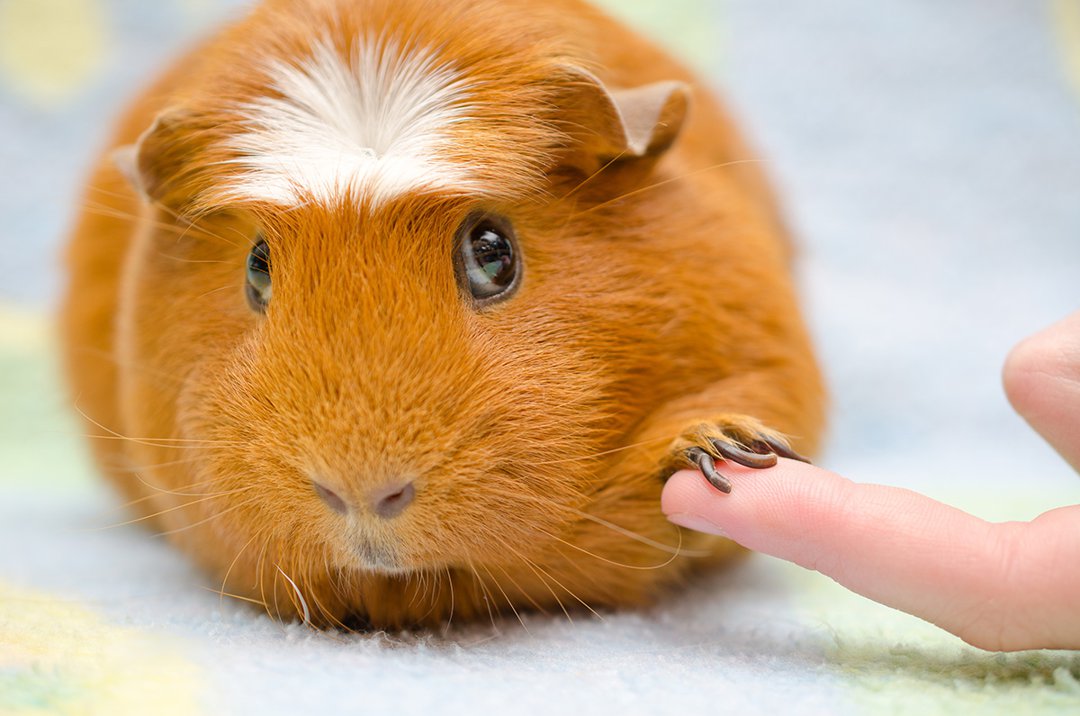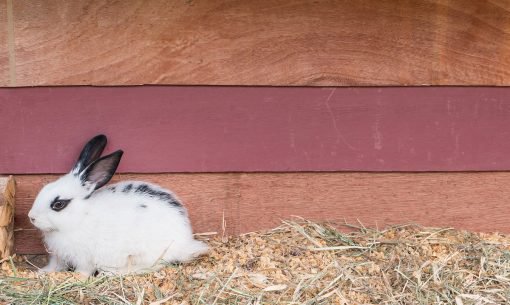Nail clipping for rabbits and guinea pigs
Rabbits and guinea pigs have tough nails that grow continually throughout their lives. These can cause problems if they grow too long, so it’s important to keep your furry friend’s nails trimmed nicely. Read on to find out more about the problems of overgrown nails and learn how to trim them safely.
Why do we need to clip rabbit and guinea pig nails?
In the wild, rabbits and guinea pigs wear their nails down by digging and burrowing and by scrambling over hard surfaces. Our pets don’t do so much of this, so their nails tend to grow faster than they get worn down.
If rabbit or guinea pig nails grow too long, they can cause a number of problems. Firstly, they can curl round and grow into the skin, which can be painful and potentially cause infection. Even if they don’t grow that far, they can still be awkward for the pet and make it difficult for them to walk comfortably.
There’s also the risk of injury – long nails are more likely to get snagged and torn, which can be very sore. If the nail gets torn off completely, this can leave a wound that could get infected. All of this means that it’s a good idea to keep your pet’s nails well trimmed.

How often should I clip rabbit nails or guinea pig nails?
How often you should cut your pet’s nails does depend on how fast they’re growing, which varies between different animals. But as a guide, you could consider nail clipping about once a month. This may sound quite often, but there’s a reason why frequent trimming is generally better in the long run. It’s because the quick itself can overgrow if the nail gets too long.
The quick is the sensitive bit in the centre of the nail that contains the nerve and blood supply. It’s important not to cut this part of the nail, as it would be painful and cause bleeding. The length of the quick therefore restricts how far back you can clip. If the nail is allowed to grow very long, the quick will grow too, meaning you can’t cut the nail back as far as you’d like when it comes to trimming time. You can encourage an overgrown quick to recede by frequently trimming the nail by small amounts, but this does take time. So, all in all, it’s best not to let the quick overgrow in the first place.

What do I need to clip rabbit nails?
This is what you’ll need to clip guinea pig nails or rabbit nails:
- A pair of good-quality nail clippers. Clippers that are specifically designed for small pets are ideal. Many vets recommend the type that look like scissors with a small notch where you place the nail to cut.
- A torch (optional) – some people like to shine a light through the nail to make the quick more obvious.
- Supplies in case you nick the quick – some damp cotton wool or cotton buds, and potentially a silver nitrate pencil or styptic pencil.
- A treat for afterwards! You’ll want to teach your pet that nail clipping isn’t a bad experience, and a bit of bribery can go a long way. Our Selective Naturals Meadow Loops make a great reward after a nail clip.

How to clip rabbit nails or guinea pig nails
When you’re clipping your pet’s nails, the first thing is to be calm and confident. To make the process go smoothly, make sure you have everything you’ll need within easy reach. Here’s how to clip rabbit nails:
1. Hold your pet so they’re safe and secure. The best way to do this depends on the individual animal, and you can make a judgement based on your furry friend’s character. Here are a couple of alternatives:
- You can place your pet so they’re sitting on a towel on a table, positioned sideways relative to you (so their head faces to your left or right). You can then clip all the claws on this side and then turn them around to do the other side.
- An alternative is to sit or kneel on the floor behind your pet, positioning them so they’re facing away from you.
- If you have a spare pair of hands, you can pick your pet up and hold them safely while your helper clips their claws.
2. Gently hold the paw with one hand and use the other hand to clip the claws. Make sure you don’t catch the quick:
- If your pet has white/clear nails, the quick should be fairly obvious – it often extends a little further than you think though! Make sure you leave a couple of millimetres after the end.
- If your pet has dark nails, you can try shining a torch through the nail to see the quick, but you still may not be able to see it. In this case, it’s best to take a conservative approach – only clip a little at a time. If your pet has both white and dark nails, clip the white ones first so you get an idea of how much you can take off the darker nails.
If you happen to catch the quick, the nail will bleed, but don’t panic. If it’s only a tiny bleed, a bit of pressure with damp cotton wool may be enough to stop it. If not, you can apply a silver nitrate pencil.
3. Make sure you clip all the nails. Guinea pigs have four toes on the front paws and three on the back, while rabbits have five toes on the front and four on the back. It can be easy to miss the dew claws on a rabbit’s front feet if they’re hidden in fluff!
4. Once you’re done, you can relax and reward your pet with a treat.

Avoiding stress for you and your pet
If your pet gets stressed while you’re clipping their nails, you don’t have to battle on! It’ll be better for all concerned if you take a break and return to the task a little later when everyone’s calmed down.
If you clip your pet’s nails frequently you will get into a routine, so the procedure will get smoother as you get more confident and your pet gets more used to it. However, if you’re struggling – or if you’re just a bit nervous about doing it the first time – it can help no end to have a demo. If you make an appointment with your vet, they show you how to hold your pet and give you some useful tips on technique.






